Sept 2020 - Dec 2020
CONTEXT
PROJECT
The Henry Ford would like to improve the role of the visit planner position in order to strengthen relationships with guests in order to optimize visits and increase motivation to purchase memberships.
They hope to better understand the guest journey and streamline the visitor planing process into a more positive and relational experience
ROLE
Account Manager, Graphic Designer, and UX Researcher
UX Research & Design, Adobe Photoshop, Miro
RESEARCH
METHODS & TIMELINE
We began by collecting information for a background research report about the client where I focused on the industry analysis. Then we spent the next 4 weeks interviewing stakeholders to better understand their organization and identify the root of their challenges. After each interview, we analyzed the data through interpretation sessions and card sorting to uncover trends. Finally, we brainstormed recommendations to offer potential solutions.
DATA SYNTHESIS & ANALYSIS
- 7 interviews from various stakeholder groups; 60-90 minutes each
- 450+ notes created and organized in an affinity wall via Miro board
FINDINGS
From our interviews, we uncovered that:
- Visitors were confused about what The Henry Ford offers and the differences between the multiple venues.
- Information is not the most up-to-date and can be hard to find on The Henry Ford website and social media platforms.
- The utilization of visual tools greatly benefits the understanding of guests.
- Guest services have had to shift their efforts on relational selling to enforcing COVID-19 policies.
- There are existing challenges to the Visit Planner position unrelated to COVID-19 policies that make relational selling difficult such as guests not knowing who the Visit Planner is and what they are there for.
Giving examples of how each could be applied where appropriate, our findings guided the following recommendations:
RECOMMENDATION: IMPROVE VISUAL TOOLS
Visitors need simpler ways to visualize and understand memberships.
- Flow-chart questionnaire to help visitors choose the right membership.
Their current visual tool is helpful but doesn't provide the proper support in determining which specific membership a visitor should purchase. This tool would allow a visitor to answer questions that would succinctly lead them to the appropriate membership recommendation.
- Digital marketing materials should depict clearer representations of what The Henry Ford offers.
Based upon our analysis and findings, here are the mockups I created in Photoshop to help The Henry Ford's online presence. The website redesign offers navigation to the user based on who they are to help guide them to information that they will find most relevant and helpful.
The Instagram redesign helps The Henry Ford transition from a transactional relationship to more of a relational dynamic through the implementation of featured highlight reels that showcase the different events and experiences that the Henry Ford has to offer for guests at each different venue. This way, The Henry Ford can engage their audience and highlight how it is an entire experience and not just a museum.
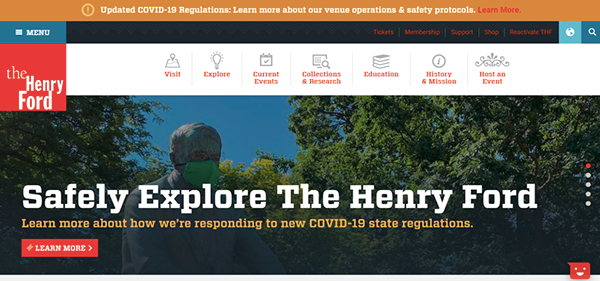
Website: Before
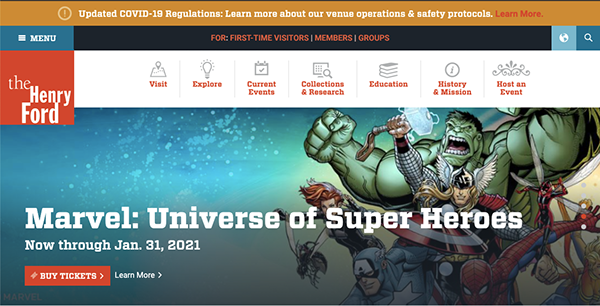
Website: After where navigation is offered based on how the user identifies
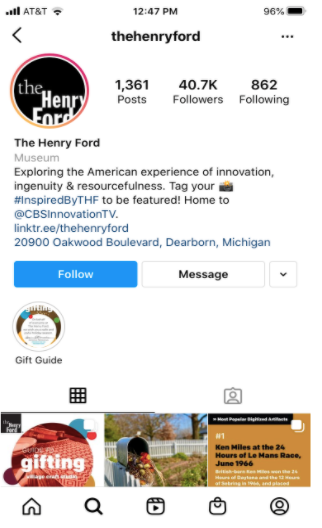
Instagram: Before

Instagram: After that include story highlights to showcase museum attractions
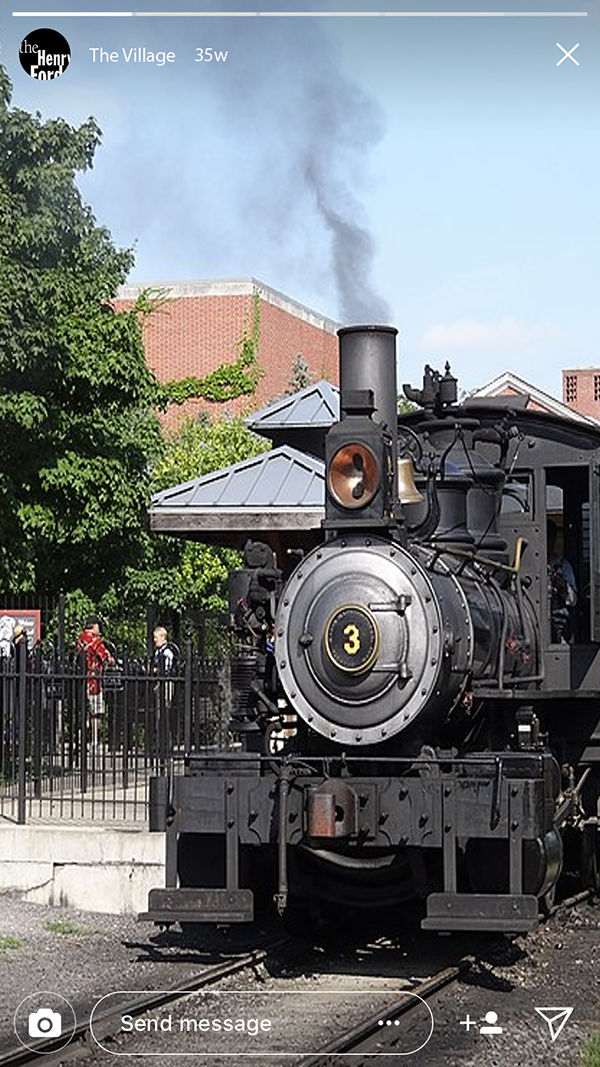
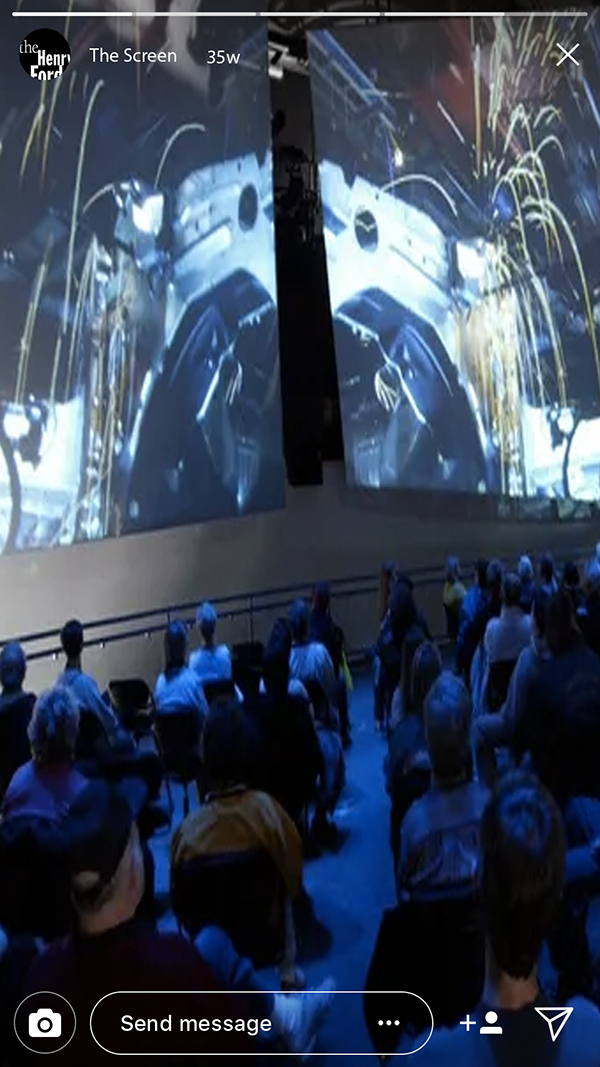
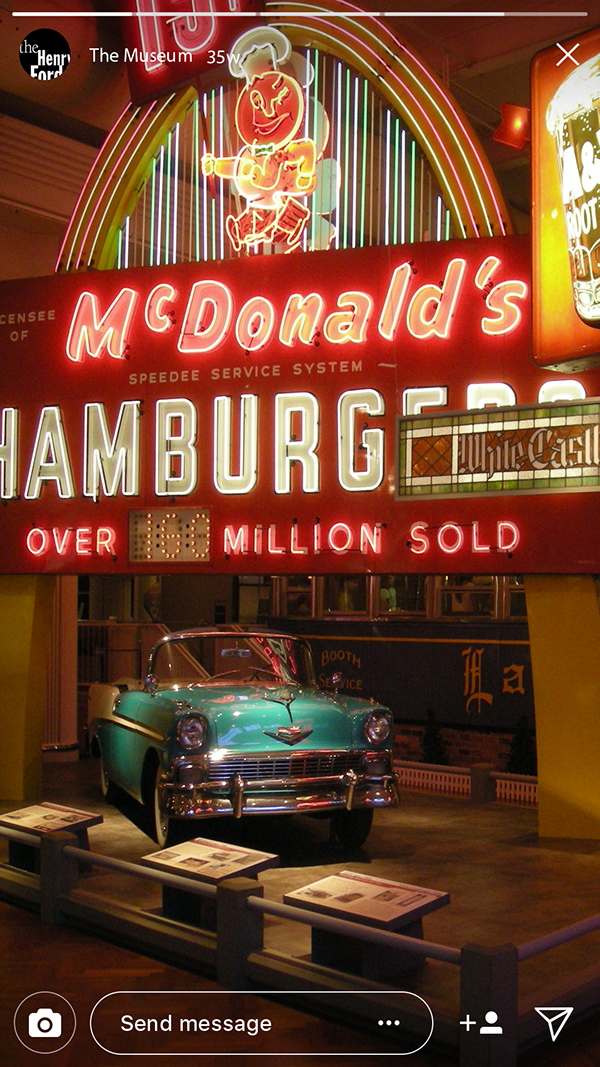
RECOMMENDATION: MAKE THE VISIT PLANNER ROLE MORE PROMINENT
The Visit Planner needs to be highlighted as a source of information.
- The Visit Planner should stand out from the other employees as an informational helper.
Currently, the Visit Planner is indistinguishable from the other employees at The Henry Ford. The findings showed that visitors did not know the purpose of The Visit Planner and were confused about their role, so changing their appearance through brighter clothing could make it clearer that the Visit Planner is someone to approach.
- Using visual tools such as comic strips and storyboards at the parking lots and different entrances to promote the Visit Planner and alert visitors who to ask for help.
This way, first-time visitors know that they can ask the Visit Planner for assistance before they walk into the welcome center. Based on our interviewees, guests are usually confused about the role of the Visit Planner and wonder why they are there. One of our interviewees mentioned that "Guests don't know that the Visit Planner is there to start the conversation and only think that they are there to sell them something extra and they must get away."
CONCLUSION
Through contextual inquiry and qualitative analysis from the interviews, we were able to understand the issues and identify root challenges that The Henry Ford faces. While there were existing problems in the current visit planning process, including visitor’s confusion about what The Henry Ford offers and issues revolving around the role of the Visit Planner, COVID-19 policies make it difficult for the Visit Planner to build a relationship with guests.
Therefore, we have provided recommendations based on the user experience perspective to clear up visitor confusion by improving in-person and online marketing materials and utilizing visual aids to make the Visit Planner role more prominent. We also came up with solutions for improving the situations guest services have encountered by enforcing mask regulations and other COVID-19 policies.
We believe that these recommendations will help The Henry Ford fill the gap between what guests expect from The Henry Ford and what The Henry Ford actually offers, improve the relational aspect of the visitor planning process, and fulfill the goals of maximizing the value of the guest visit for both short-term (COVID-19 mode) and long-term (not COVID-19 mode).